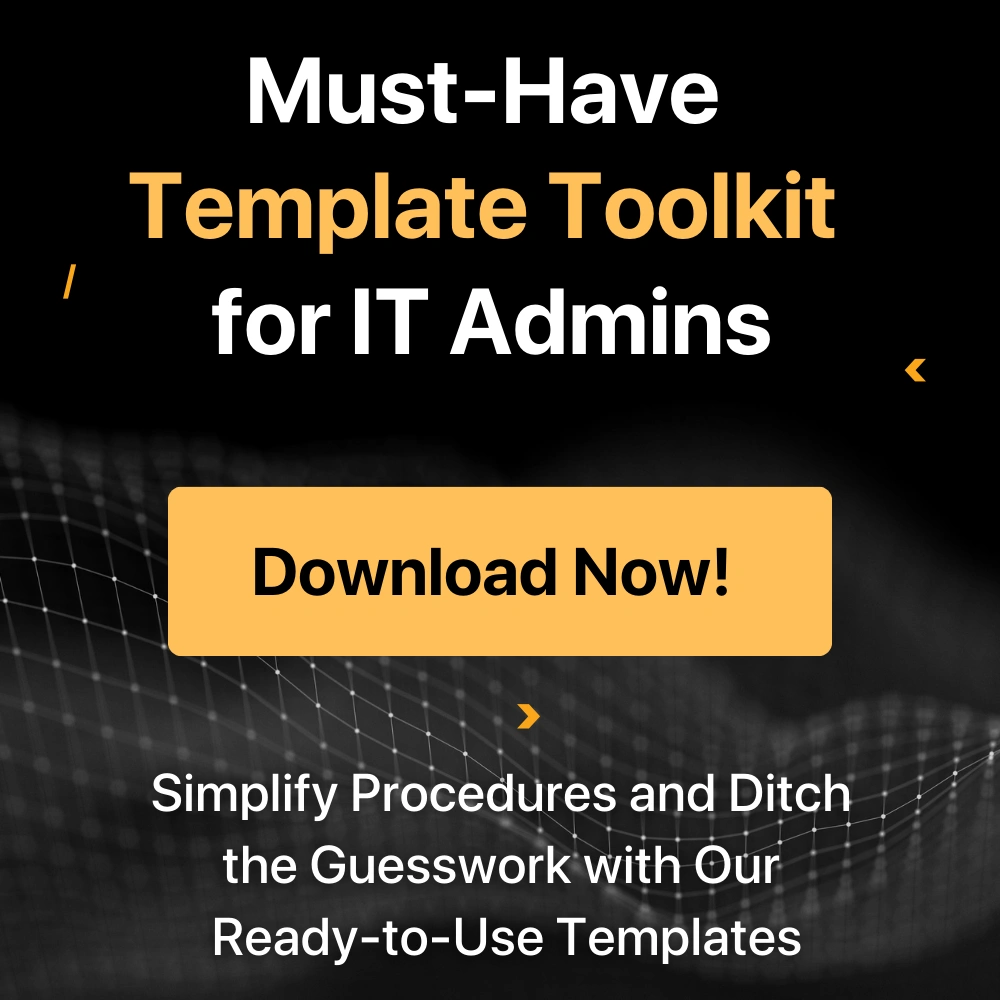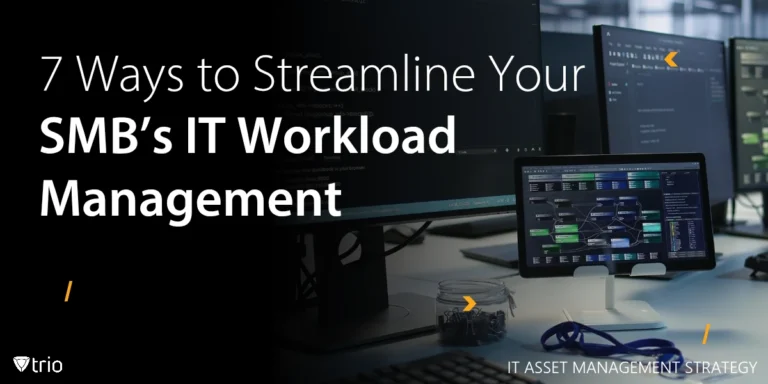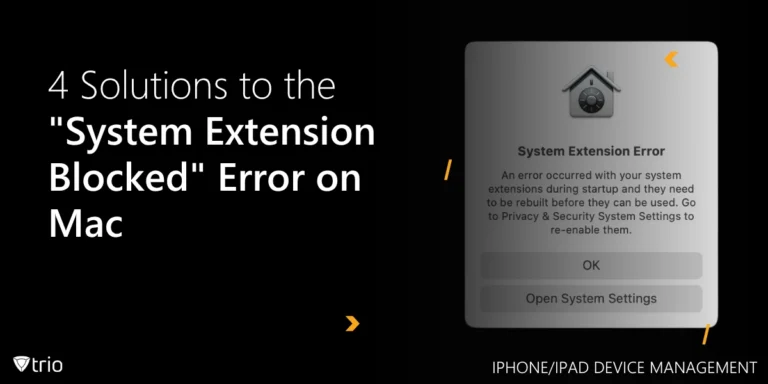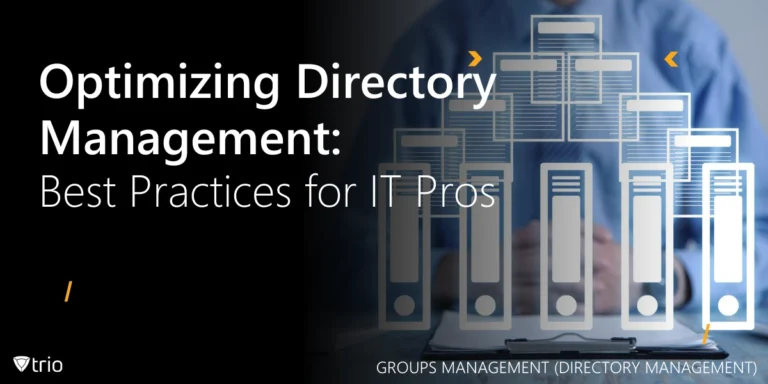More than half of small businesses would shut down after a cyberattack costing just $50,000—and nearly a third couldn’t survive an impact under $10,000. For IT admins at SMBs, staying compliant with NIST standards, and IT compliance overall, isn’t just a checkbox, it’s a critical step toward protecting data and winning business, especially with US government agencies.
But any type of compliance is hard when you're:
- Managing scattered mobile devices
- Lacking visibility into endpoints
- Struggling to enforce consistent security policies
That’s where Mobile Device Management (MDM) comes in. A good MDM solution helps automate key NIST security controls, making compliance automation easier, faster, and more reliable. In this blog, we’ll cover what NIST compliance stands for and why it matters, NIST cybersecurity standards, and how MDM simplifies compliance.
What Is NIST Compliance? (And Why IT Admins Should Care)
If you manage IT at a small or midsize business, you're likely juggling security, limited resources, and growing compliance demands. That’s where NIST comes in.
The National Institute of Standards and Technology (NIST) is a US agency that publishes trusted cybersecurity standards and best practices. Following NIST guidelines—known as NIST compliance—can help protect your systems, reduce risk, and open doors to government contracts. In fact, NIST-driven standards have helped organizations save over $1 billion by preventing costly incidents.
We’ll focus on three key NIST frameworks that matter for SMBs:
- NIST Cybersecurity Framework (CSF) – A broad roadmap for managing and reducing cybersecurity risk
- NIST SP 800-53 – A catalog of controls for securing federal systems (and useful for any business)
- NIST SP 800-171 – A must-know for handling controlled unclassified information (CUI), especially in the supply chain
Keep in mind that these summaries of NIST compliance standards are only meant to gain a better understanding of NIST compliance requirements. For full compliance, be sure to visit the original NIST documentation at the NIST website.

1. NIST Cybersecurity Framework (CSF)
What it is:
The NIST Cybersecurity Framework is a flexible, risk-based approach to managing cybersecurity. It’s organized around five key functions: Identify, Protect, Detect, Respond, and Recover.
Why it matters for SMBs:
It’s ideal for small businesses looking for a starting point. The framework doesn’t tell you exactly which tools to use, it helps you build a strategy tailored to your resources and risk level.
How SMBs can comply:
- Identify: Know what assets you have (devices, data, and users)
- Protect: Implement access controls, secure configurations, and encryption
- Detect: Monitor devices and networks for suspicious activity
- Respond: Have a clear plan to react to incidents
- Recover: Restore systems quickly after an incident
How MDM helps:
An MDM solution plays a key role in the Protect, Detect, and Respond stages:
- Enforces device encryption and screen locks
- Pushes security policies to all endpoints
- Tracks devices in real time and flags unauthorized access
- Allows remote wiping or locking of compromised devices
2. NIST SP 800-53
What it is:
NIST 800-53 provides a comprehensive catalog of security and privacy controls for federal information systems. It’s widely used by organizations, even outside the federal space, to strengthen their cybersecurity posture.
Why it matters for SMBs:
Though detailed and complex, 800-53 offers clear control categories that SMBs can adapt. Think of it as a checklist of best practices to protect your systems and data.
How SMBs can comply:
Start by focusing on the controls most relevant to your business:
- Access Control (AC): Limit system access to authorized users
- Audit and Accountability (AU): Keep logs of activity
- System and Information Integrity (SI): Monitor and patch systems regularly
How MDM helps:
An MDM solution supports these controls by:
- Managing user permissions and app access across mobile devices
- Logging device activity and helping meet audit requirements
- Pushing OS and app updates to prevent vulnerabilities
3. NIST SP 800-171
What it is:
NIST 800-171 is designed for organizations that handle Controlled Unclassified Information (CUI), especially if you’re part of the federal supply chain or contracting with the Department of Defense.
Why it matters for SMBs:
If your SMB wants to do business with the US government, or work with partners who do, compliance with 800-171 is often mandatory.
How SMBs can comply:
Focus on implementing the 14 control families:
- Access Control (AC): Limit access to systems and data to authorized users.
- Awareness and Training (AT): Ensure personnel are trained to recognize and respond to cybersecurity threats.
- Audit and Accountability (AU): Track and log system activity to detect and investigate suspicious actions.
- Configuration Management (CM): Maintain secure configurations of hardware and software and control changes.
- Identification and Authentication (IA): Verify the identities of users, devices, and processes before granting access.
- Incident Response (IR): Establish a plan for detecting, reporting, and responding to cybersecurity incidents.
- Maintenance (MA): Perform regular system maintenance while protecting sensitive data during those activities.
- Media Protection (MP): Safeguard sensitive data stored on physical or digital media (e.g., USBs, hard drives).
- Personnel Security (PS): Screen individuals before granting access to systems with CUI and handle termination securely.
- Physical Protection (PE): Restrict physical access to systems that store or process CUI.
- Risk Assessment (RA): Assess risks to organizational systems and data regularly.
- Security Assessment (CA): Periodically evaluate the effectiveness of security controls.
- System and Communications Protection (SC): Protect data in transit and ensure secure communication channels.
- System and Information Integrity (SI): Identify and correct flaws in systems in a timely manner and protect against malware.
How MDM helps:
MDM helps meet NIST 800-171 requirements by:
- Enforcing encryption on all mobile endpoints
- Restricting access to authorized users
- Monitoring compliance in real time
- Remotely wiping lost or stolen devices to protect CUI
To Summarize It:
| NIST Framework | Purpose | Why It Matters for SMBs | How MDM Helps |
|---|---|---|---|
| NIST Cybersecurity Framework (CSF) | Provides a flexible, risk-based approach to managing cybersecurity through 5 functions: Identify, Protect, Detect, Respond, Recover. | Ideal starting point for SMBs to build a tailored security strategy based on their size and risk profile. | Enforces encryption, pushes security policies, tracks devices, enables remote lock/wipe. |
| NIST SP 800-53 | Offers a detailed catalog of security and privacy controls for federal systems (adaptable for any business). | Acts as a best-practice checklist to strengthen security posture and reduce vulnerabilities. | Manages user permissions, logs device activity, pushes critical OS/app updates. |
| NIST SP 800-171 | Specifies requirements for protecting Controlled Unclassified Information (CUI), especially for federal contractors and supply chain partners. | Often mandatory for businesses handling federal data or working with government agencies. | Enforces encryption, restricts unauthorized access, supports real-time compliance monitoring and remote wipe. |
Keep in mind that MDM solutions don’t replace full compliance strategies, but they automate and enforce many of the technical controls outlined by NIST. For SMBs with limited staff, MDM like Trio acts as a scalable way to reduce risk and stay aligned with key standards.

Why Trio Is a Smart Move for NIST Compliance
For small and midsize businesses, the cost of a data breach can be devastating. The average incident costs nearly $3 million which is often enough to shut a company down. Even smaller breaches can result in lost contracts, fines, or damaged trust.
At the same time, IT admins are expected to stay compliant with complex frameworks like the NIST Cybersecurity Framework (CSF), NIST SP 800-53, and NIST SP 800-171, all while managing a growing fleet of mobile endpoints.
That’s where Trio comes in. It goes beyond device management to automate and enforce the technical controls outlined in NIST standards:
- Apply access and encryption policies
- Monitor compliance in real time
- Control app use and system configurations
- Respond to threats quickly with remote lock or wipe
- Log activity to support audit and reporting requirements
From risk-based planning under CSF to protecting Controlled Unclassified Information (CUI) under 800-171, Trio helps you handle compliance faster, smarter, and with less manual work. It checks critical boxes without overwhelming your team, delivering enterprise-grade protection without the complexity or cost.
Start your 14-day free trial or book a free demo with our team to experience Trio.
Bonus: Free NIST Cybersecurity Framework Checklist
Streamline your cybersecurity strategy with this free NIST CSF checklist. It helps you identify, protect, detect, respond to, and recover from cyber threats, ensuring compliance and stronger security. Download now!
Conclusion: Secure Compliance Starts with the Right Tools
NIST compliance isn’t just for government contractors, it’s a crucial step for SMBs that want to stay secure, competitive, and trustworthy in today’s threat landscape. Cyberattacks are on the rise, and small businesses are among the hardest hit.
Yet with outdated tools, limited visibility, and inconsistent device policies, compliance can feel out of reach. That’s where MDM solutions like Trio make a difference.
Trio gives you everything you need to secure your endpoints and streamline compliance, all without draining your time or resources. Whether you're working toward NIST, CIS, or SOC 2 compliance, Trio simplifies the journey with smart, automated tools built for small teams with big responsibilities.
Get Ahead of the Curve
Every organization today needs a solution to automate time-consuming tasks and strengthen security.
Without the right tools, manual processes drain resources and leave gaps in protection. Trio MDM is designed to solve this problem, automating key tasks, boosting security, and ensuring compliance with ease.
Don't let inefficiencies hold you back. Learn how Trio MDM can revolutionize your IT operations or request a free trial today!





